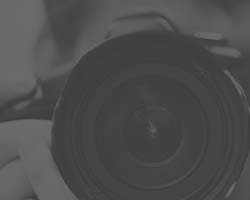Student Success: Student Profile J Daniel Roberts
NAME: J. Daniel Roberts
CITY: Red Wing, MN
BUSINESS: J. Daniel Photography: "Drawing visual inspiration from nature."
How did you first become interested in photography?
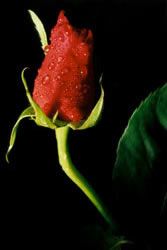
My interest in 35mm photography began in about 1976-77 in Europe. I was on a job assignment in London and took a weekend trip to Paris with a buddy. He had a 35mm camera and was quite good with it. When I saw the quality of his prints, I was hooked.
Later, I started reading a few photographic magazines and experimenting with a 35mm camera I borrowed from a friend in St. Louis. By the late seventies I produced my first production-quality print.
I kept refining my technique and eventually offered for sale, and sold, my first prints in 1985.
I continued creating and selling more prints. I also sought more training and enrolled in the excellent training at NYI.
Additionally, I bought and read any book on photography I could get my hands on. I have a two thousand volume library in my Miami condo, not all on photography, of course, but you can gather from this I read and research widely.
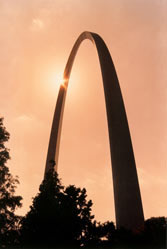
I built my first of two darkrooms during my NYI training and have spent many hours in them, often stumbling out into the daylight after I was too tired to make any more prints. It's here where you get deep insights into the photographic process. It's here where you really begin to connect with Ansel Adams' pre-visualization of the shot and how he thought out his darkroom process in advance before he ever clicked the shutter. You begin to think through the process from end to end.
That early NYI darkroom training is as valuable today with digital photography and digital darkroom. There is a significant transference of knowledge from film based photography to digital.
I began to leave the chemical darkroom in 1998 and moved toward the digital darkroom. I use Adobe Photoshop for my darkroom work and later, I began using Adobe InDesign for my graphics layout work. These products are world class.
Why NYI for your training?
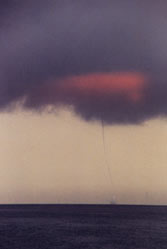
I stumbled onto an NYI ad in a photo magazine years back. I didn't believe the claims – I'm a natural skeptic – but figured "what the heck" and signed up. I knew I needed help to get to the next level because, regardless of all the reading and research I did on the subject, sometimes my shots were good, sometimes not – I was inconsistent and didn't know why.
NYI exceeded ALL of the claims in that ad. My decision to purchase the training has been one of the best value-for-money decisions I've made.
It's just excellent quality training. The material is presented in a very logical sequence, very understandable. I still look at my old lesson books from time to time – they are eternal. And frankly, they're inspirational – they make you want to go out and shoot great pictures.
The critiques I received from New York professional photographers influenced me a great deal and were also encouraging. When I shoot, sometimes even today, I have this nagging thought in the back of my mind – what would my NYI instructors think of this, am I shooting the very best I can, is there another angle, should I zoom in or widen my field of view, rule of thirds, emphasis through repetition, is there a natural S curve, on and on.
And ALWAYS the classic NYI questions burned into my brain – What is the subject? How can I emphasize the subject? How can I eliminate distractions from the subject?
What do you enjoy most about being a photographer?
I hope that I've added some small pleasure and perspective to people's lives with my work. That's a tall order. My customer comments indicate I've touched on that goal.
I think these two comments from customers sum it up.
The first is from an ex-Chief Financial Officer of a large corporation:
"I received your photographs… They took my breath away. They are brilliant and I will treasure them forever… Both are wonderful, but of course my heart is captured by the quotation style. Your work prompts deep emotion and the quotes help to put words to the emotion. My butterfly prints are hanging above me as I write this and they have inspired me since you sent them. Your work is thought provoking." J. Vitale – Weston, Florida"
The other from the chairman of another large corporation. Receiving these kinds of comments is the most gratifying part of the business.
"We have purchased photographs from J. Daniel Photography many times, and have always found the quality of the work to be highly professional, the images crisp and clear, and the subject matter expressing a view of nature and the world around us that we identify with and share. The images evoke both feelings and memories, bringing the places, things, and times sharp in our minds. J. Daniel is our first choice for quality photographs, and we will continue to wait anxiously for new work to peruse and purchase." John and Mary Ann Danahy – St. Louis
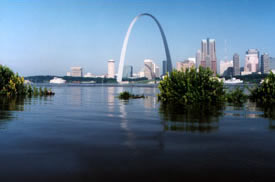
Or this story told to me by a sales rep who was marketing my pictures in the late eighties. She sold an enlargement of my Red Rose print to a gentleman who was going to give it to his fiancee. As he told her, it was like his love for her, "it was a rose that would never wilt or die." Subsequently, they were married and later had a baby girl. They named her Rose, partly in memory of the picture.
That's pretty gratifying and inspirational to me.
Perhaps photography and my customers have had a bigger impact on me, helping me to see the world from a larger perspective, giving me the ability to capture my view, to freeze time, and see their reaction to my vision. It's all changed me internally, and for the better.
What are some of the more difficult challenges in your work?
From a photographic standpoint, I run into a situation every once and a while where I just can't get the shot I want (and I'll go to just about any lengths to get a shot). I've always thought it was just me, but I read in one of Gary Berstein's photography books that he said something similar – sometimes you just can't get the shot.
So there I am, camera in hand, and I realize I'm in a place that is beautiful, awesome, but I think, "as beautiful as this is, it just won't make a great photograph." It's a strange, almost self-contradictory distinction to make.
Maybe the scene doesn't have a clearly identifiable subject to me, or maybe I just can't think of a way to capture the emotions my view is bringing up in me – not in a meaningful way to transmit to someone else in print form.
Fortunately, the world is a big and wonderful place, and there are an infinite number of images out there just waiting for me, and they ARE possible to capture.
From a business standpoint, the challenge is always getting as many people as possible to see my work – hence the web site I created recently.
I want my site to show close to the top of any web search a potential customer makes (like on Google, etc.). I recently did some serious search engine optimization of my site to assist this, and then submitted my site to some of the larger engines like Google, Altavista, Yahoo, etc. It will take their web crawlers a month or so to get around to analyzing my site. I'll be interested to see if all my optimization work improved my ranking and placement.
How did you get your first paying job in photography?
I sold my very first print to a neighbor. It was of an old farm swing, shot on Panatomic X (I loved that film – sadly now discontinued). They've continued to buy enlargements throughout the years. Their house, and others, are a virtual gallery of my work.
I've always carried photos with me to show people. Word spreads if you stay at it and promote your work. You have to promote your work.
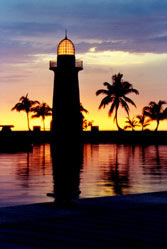
So I designed my card in Adobe InDesign and carry it with me at all times and hand it out. I'm shameless about this. I was at the beach the other day and handed it to a couple of women. They were interested and smiled when they saw it. People respond well to the Lighthouse at Boca Chita picture I have on the card.
I've shot in numerous situations – portraiture, some press release photos, many events, some graduations and graduation parties, some models and even a female bodybuilder. I've never shot weddings, although I've been asked to many times – I try to avoid places with two Mother-In-Laws of strong opinion in the same room!
But really, I focus primarily on scenic photography. Landscapes, flowers, cityscapes, the beach, ocean and sailing scenes, travel – anything visually inspirational.
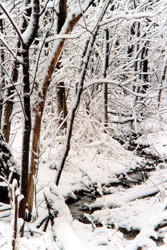
One of my more interesting assignments came from the corporate office of a Fortune 500 company. They were relocating staff members from the West coast to St. Louis and wanted to showcase the city and their new offices to the relocating staff.
I spent a number of days photographing the downtown area and the new offices. I worked to show the town as an interesting and fun place to be. I did things like go to the top of parking garages and shoot down on a large lunch-time Cardinals baseball rally in Keiner Plaza, or shoot restaurants and the office from street level but with a different perspective. And of course, I shot the Arch and the historic riverfront on the Mississippi River with it's Mark Twain-esque paddlewheel and gambling boats, all within walking distance of the office.
The portfolio was a big hit, and I like to think it made people feel a bit better about leaving Los Angeles for the Mid-West.
That said, I'm still drawn most deeply to shots from nature.
I read a great article once about the origins of human aesthetics. The premise was that what we find beautiful in nature stems from what helped our survival in the past. For example, we respond to a picture from a high up vantage point, framed by tree branches, looking down on a body of water, surrounded by lush vegetation and wild game animals grazing below.
Think of an early human in this context. Being high up and framed by trees represents security, being hidden away from predators. Water, vegetation and animals represent our basic need of food and water. Or think in the context of a frontiersman, hidden from enemies, hunting game for his log cabin family and powerful thirsty to boot. Those who did not find these scenes appealing increased their unfortunate odds of being killed, eaten or starved and subsequently died out.
We are the progeny of those who found these scenes aesthetically pleasing, hence our attraction to them.
Whether the aesthetics theory is valid or not, it's that deep inside bred-to-the-bone "thing within us" I'm trying to get to – to raise those feelings and memories to the surface. When you look at one of my images, I want you to feel something – deeply.
How has your NYI training helped you?
It's taught me how to get more consistent, professional results. It's been inspirational. Truly, my best shots are a product of NYI training. It's that simple. And that great!
How did you come up with the idea for your business?
It just evolved over time. When you're passionate about something, these things just seem to come to you. I knew from the time I sold my first print that I wanted to share my work. Shortly after that I started J. Daniel Photography.
What's next for you in photography?
My current work consists of issuing a monthly edition of my Web site to keep customers excited and coming back. Each edition has a theme and additional shots. It will grow over time as a complete archive of all my work over the past twenty plus years – for others to enjoy – and purchase prints from.
Next month's edition will feature the new Bahamas Gallery, an exciting view from some of my past and recent sails to this tropical island nation. Nothing takes to the camera and this photographer/sailor quite like the pale blue Bahamian waters and the laid back atmosphere – no worries, Mon.
Additional work may also include more black and white nature photography captured on infrared film – I love this art form as it produces striking and slightly surreal images of the world by recording heat as well as light.
Also in the works is an easy to use, non-technical report for my customers on how to take better photographs.
And, very important, adding greeting cards to the site. I'm working with the president of a photo lab in California on this. I've sold two lines of cards for years, but want to expand this in a big way. The margins aren't as great, but cards are a consumable that customers purchase all year long. And they're great marketing pieces as well.
Concerning shooting, my next scheduled location will be the Florida Everglades. I am really looking forward to this adventure. I'll be going out in a very small boat to be low to the water and enveloped by the surroundings.
And I will continue to shoot various island and ocean scenes as I sail my boat, the Saline Solution II in the Florida Keys and the Bahamas.
Are there any learning experiences you wish to share?
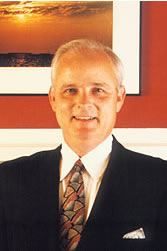
You have to be there and do what it takes to get the shot. My Lightening Tinged Spout shot illustrates this. I was sailing in the Florida Keys when a large storm rolled in, creating numerous waterspouts heading my way. There was nothing I could do to outrun them. So I put my sailboat on autopilot to sail away, then grabbed my camera and started shooting. I caught a spout as lightening ran down it to the ocean and a large red afterglow tinged the clouds above. You can see the lightening at the bottom of the spout in an enlargement. Of course, luck has something to do with this also.
But we make our own luck – we vastly increase our odds by being there and doing what it takes to get the shot.
Or the great five hundred year flood in St. Louis in 1993. I knew there would be an interesting shot of St. Louis, almost flooded, from across the Mississippi on the east side in Illinois. So while everyone else was sleeping in on Saturday morning, I was down at the riverfront in East St. Louis, setting up to shoot.
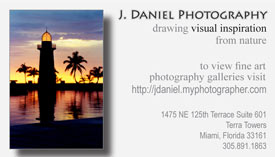
Standing at the edge of the levee, with the water just a foot below it's top at my feet, I could feel the force of the swollen river pass by – I could sense the ground trembling. Then a patrol of National Guardsmen came by and told me to leave – that the levees might break.
So I agreed.
As they passed out of sight, I went back to my camera and tripod, shot off a couple of rolls of film and then got out of there before they returned. I hope the statute of limitations has run out on this (chuckle).
Or getting up early in the morning on a freezing cold day after a fresh snow and packing tripod and gear to a creek. Shooting until your fingers are numb, you're shaking with cold, and the equipment is starting to freeze up. Then shooting some more. You gotta get out and do it.
You have to be there and do what it takes to get the shot.
Do anything to get the shot!
What skills or qualities have served you best in your professional photography career?
To see the world, to really see it, so deeply that the familiar becomes new. This is cliche perhaps, but true.
For example, I think one of the best places to view great photography is on the ubiquitous television set. Millions watch, but few really see the images in front of them. Few notice that often the subject (newscaster, baseball player, etc.) is not exactly centered in the screen, that the cameraman is deliberately employing the compositional rule of thirds, offsetting the subject for visual interest. So these same viewers go out and shoot pictures, centering their subjects, and are sometimes disappointed with the results.
I liken it to the Mongolfier brothers in France in 1777, who, upon throwing a paper bag in the fireplace one day, noticed that it floated up the chimney. They applied this observation and invented the world's first hot air balloon. Now, millions of humans before them had seen the same effect of objects rising in the hot smoke of a fire. But they didn't really see, not deeply. And so they didn't put it together.
I try to see what others may overlook. On occasion, I succeed.

